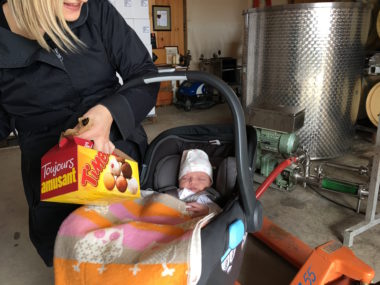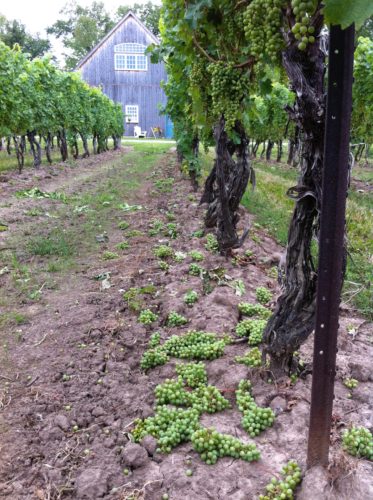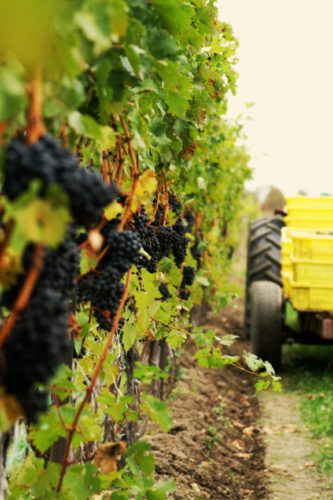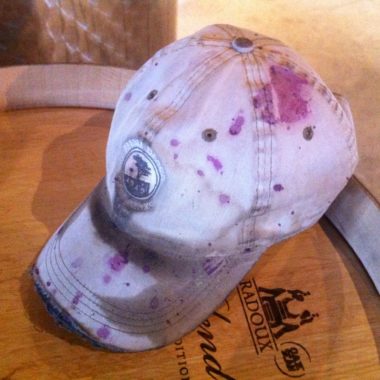Lately, I’ve gotten into the habit of singing the song “Here Comes the Sun” to my daughter every morning, in hopes of changing the prevailing weather pattern of 2017. I make an effort not to complain too much about the excessive rain around her, just to lessen the chance she grows up to be a crotchety grape farmer. So, instead, we focus on “sunnier” topics and stories from glorious vintages of the past.
She has no idea that you can literally watch the vines grow this year – we must have set some kind of record for photosynthesis by now! I can’t recall a year where every bud on every shoot is alive and thriving. On the macro level this is a great thing (healthy vines, good crop level, replenished water table), but when you are fully immersed in this tropical Niagara jungle on a daily basis, you quickly realize the enormity of task we are up against.
The rains of 2017 have been a frightening reminder that there is no “typical” growing season anymore. There could not be a more stark contrast between two vintages than 2016 and 2017 to this point. Consequently, our vineyard strategies have had to be dramatically altered to account for the increase in shoot growth.
Unfortunately, it’s not as simple as just aggressively thinning down the vines to their “normal” level, because the few leftover shoots and clusters would grow too vigorously. Therefore, I’ve taken more of a staggered approach to thinning this year, letting vines gradually acclimate to the increase in water and nutrient uptake. Keeping more shoots and clusters on the vine for a longer period of time can also be risky, because too much crowding in the canopy might lead to increased disease pressure. So being out there every day thinning, scouting and gauging shoot growth is essential.
Thankfully, the disease pressure has been minimal thus far…that is until we sustained some hail damage over the past week, presenting a new challenge of split and bruised berries. Split berries and excessive humidity are the perfect recipe for Botrytis, so we are pulling leaves and opening up the canopy a little earlier than normal to help dry up the hail damage. For the record, I’m not quite comfortable using the B-word around Frances yet.
This season has proven to be an exercise in patience and adaptation. I hold out hope, looking at the sunny long range forecast, that my determined morning sing-along is finally paying off!




